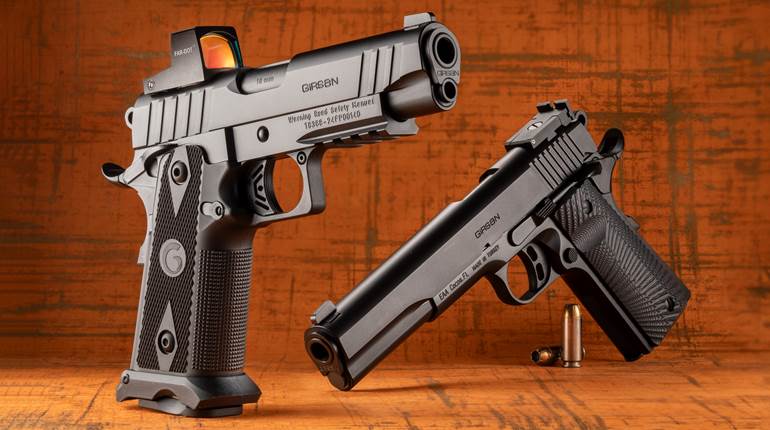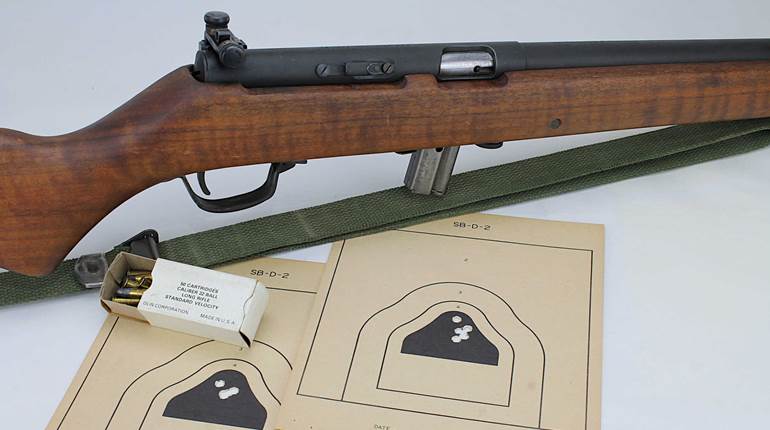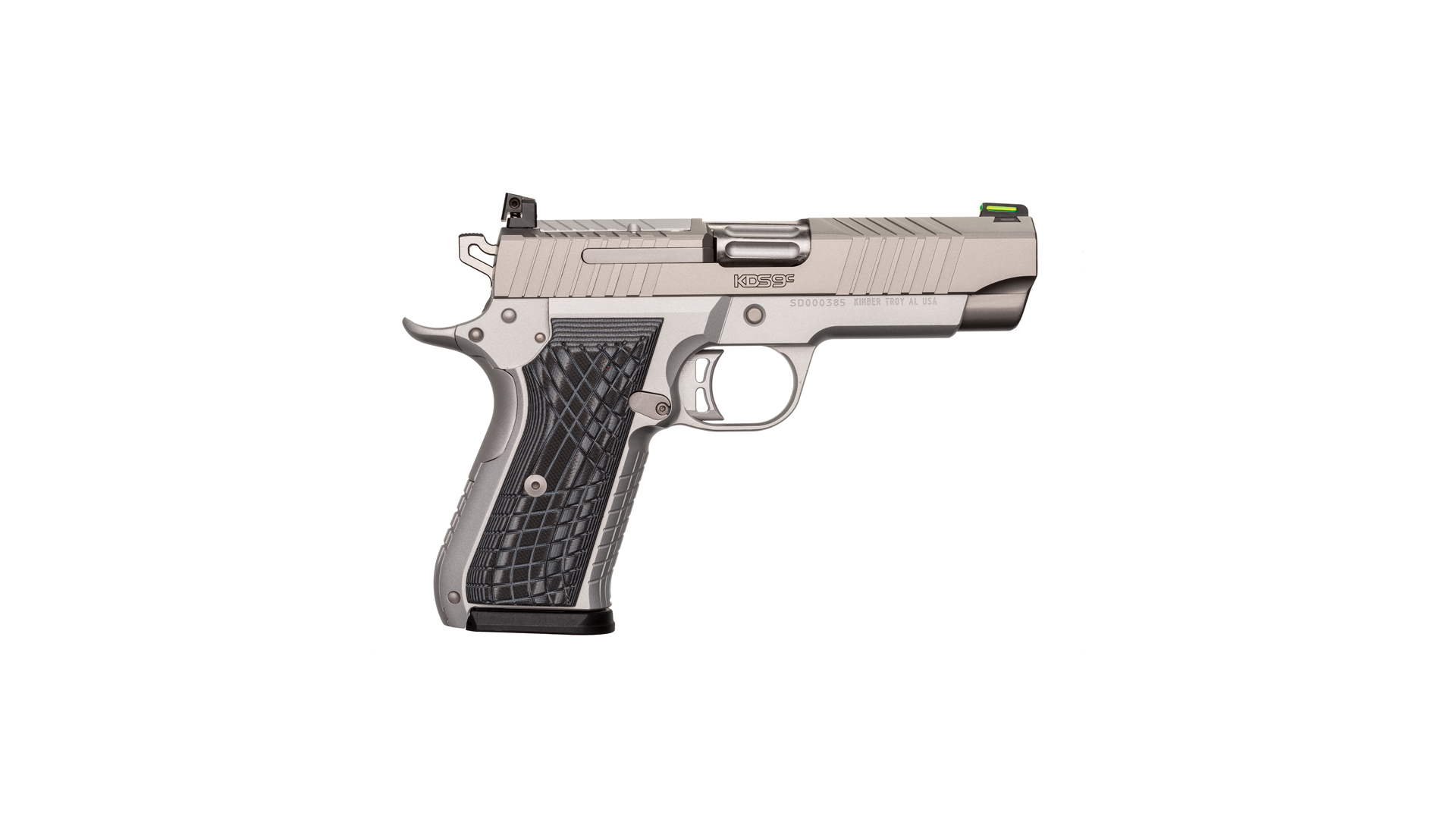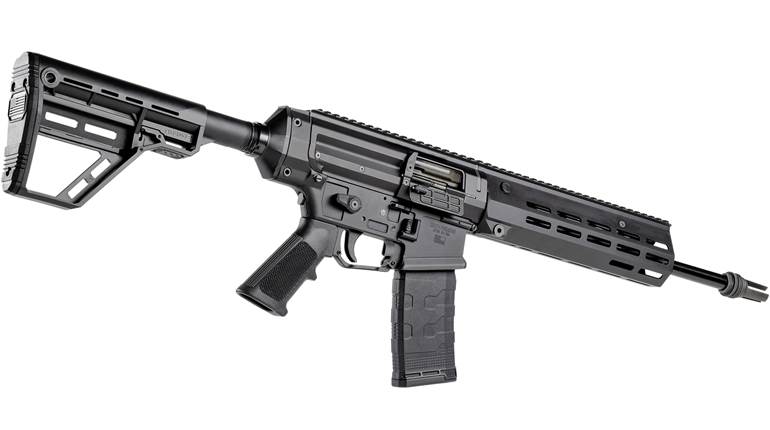
Ubiquitous. The word certainly applies to the most successful little sporting carbine in history. That, of course, is Ruger’s 10/22.
In continuous production for more than a half a century now, William Batterman Ruger‘s handy little .22 Long Rifle carbine continues to be the top-selling .22 semi-auto rifle in America. The total production number the folks at Ruger seem comfortable with is about 8 million guns. In terms of sporting firearms, the Mossberg 500 and Remington 870 are the only others in the ballpark.

What makes this little gun so special and enduring? First of all, good design, aesthetic and mechanical. Bill Ruger was a gun guy through and through and had worked at Auto Ordnance during World War II, so no doubt he was familiar with the “U.S. Carbine, Caliber .30, M1.”
About six million M1 carbines were made before the end of World War II. His 10/22 outwardly resembled the M1 carbine, and the fact that it is attached by a screw at the rear of the receiver and by a barrel band at the front makes it more than just a passing resemblance. Unlike the short-stroked gas-piston-operated M1 carbine, the 10/22 was and is a simple blowback, in which the weight of the bolt keeps the action closed after firing until pressure dropped to a safe level.
It wasn’t Bill Ruger alone who designed the 10/22. He got get help on some of the key features from Harry Sefried, one of the greatest gun designers of the second half of the 20th century.

It was Ruger’s semi-auto pistol that launched the company in 1949, but by 1964, the world was ready for a new semi-auto .22. Turns out, semi-auto .22s are pretty fun. Three features made the 10/22 great, then and now. The first of which was its magazine—you can’t have a good gun with a good magazine.
It was a 10-round rotary magazine, based on ideas earlier used by Otto Schoenauer and Arthur Savage in the Mannlicher-Schoenauer bolt-action and the Savage Arms Model 99 lever actions, respectively. Easy to load and with no way for the rims of the .22 Long Rifle cartridges to interfere with each other, it was a genius solution to feeding a semi-automatic rimfire rifle. The 10-round BX-1 has now been joined by the BX-25. Thanks to the Maglula 10/22 loader, they are nearly as easy to fill when empty as they are to unload the fun way.
But an idea that was essentially for ease of manufacturing made the 10/22 perhaps the most adaptable rimfire in history. Ruger decided to use “V”-block to attach the barrel to the investment-cast aluminum receiver. It certainly made assembly at the factory easier, but it also made disassembly easy, too. Hmm. With nothing more than the right wrench, a 10/22 owner could swap the barrel out himself. It’s only scary the first time you do it.

Best of all, the 10/22 was and is an outstanding value. No need to hog out billets of steel for the receiver; a casting could do nicely. And Ruger was then and is now very good at casting. It killed off the Remington Nylon 66 and sidelined most of its competitors for decades.
Speaking of decades, companies such as Brownells and Midway USA offered page after page—first printed pages in catalogs then on the web—of accessories for the 10/22—stocks barrels upgraded bolts, weighted bolts, buffers, triggers, sights, you name it. If a 10/22 owner thought they might need it, someone was going to make it. Long before AR owners took to tinkering with their guns, millions of 10/22 owners had already gone before.
Today’s 10/22s can be found in traditional-looking hardwood stocks, or they can be takedowns in synthetic stocks. There’s even a version in an Archangel stock that is about as tactical looking at such things get. And there have been copies from the likes of AMT, Magnum Research and Volquartsen, and let’s face it, Thompson/Center isn’t fooling anyone with the T/CR-22.
The 10/22’s importance in the market can’t be overlooked. While the Marlin Model 60 is temporarily out of production, it has a tubular magazine. There’s no doubt that the detachable rotary box employed in the 10/22 is the better mousetrap.

No matter which company attempts to bring out a new .22 rimfire, all of them occur in the shadow of the Ruger 10/22. Remington, in particular, has tried and failed to go after the 10/22 with all manner potential challengers, including the hideous 522 Viper, whose stock, no joke, was made of recycled tires, and the Model 597, which has, at best, an adequate magazine. (It is my hope any remaining Viper stocks are enroute to the Great Springfield Tire Fire as this is written.)
I’ve told succeeding generations of Remington executives to just go ahead and use the 10/22 magazine. They didn’t listen, and while their company is on the mat with smelling salts being the best hope of revival, the 10/22 is made by the thousands, day in and day out.
The 10/22 has been literally everything to everyone. Whether it is a classy-looking gun in a Mannlicher stock, a stainless take-down or the Boy Scout commemorative, there’s something for everyone in the way of Bill Ruger‘s for 10/22. Even though one day a year is set aside as “10/22 Day,” really, aren’t they all?






































